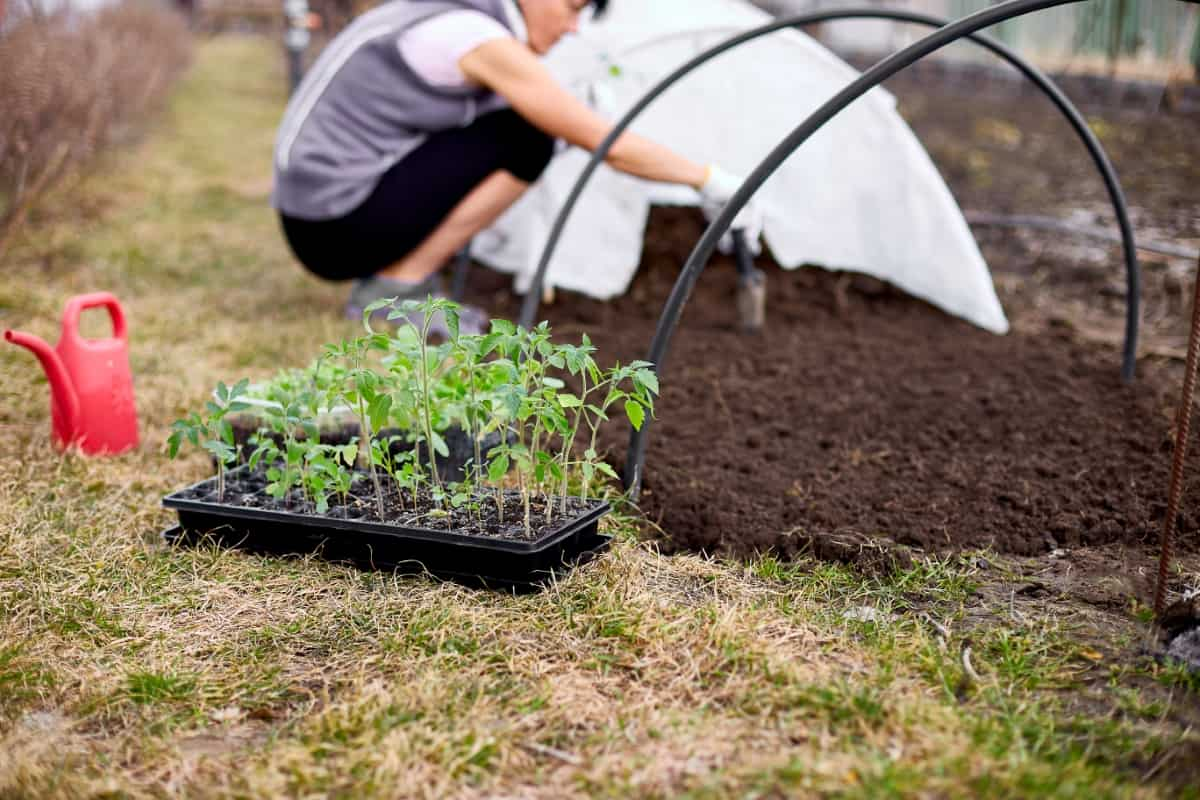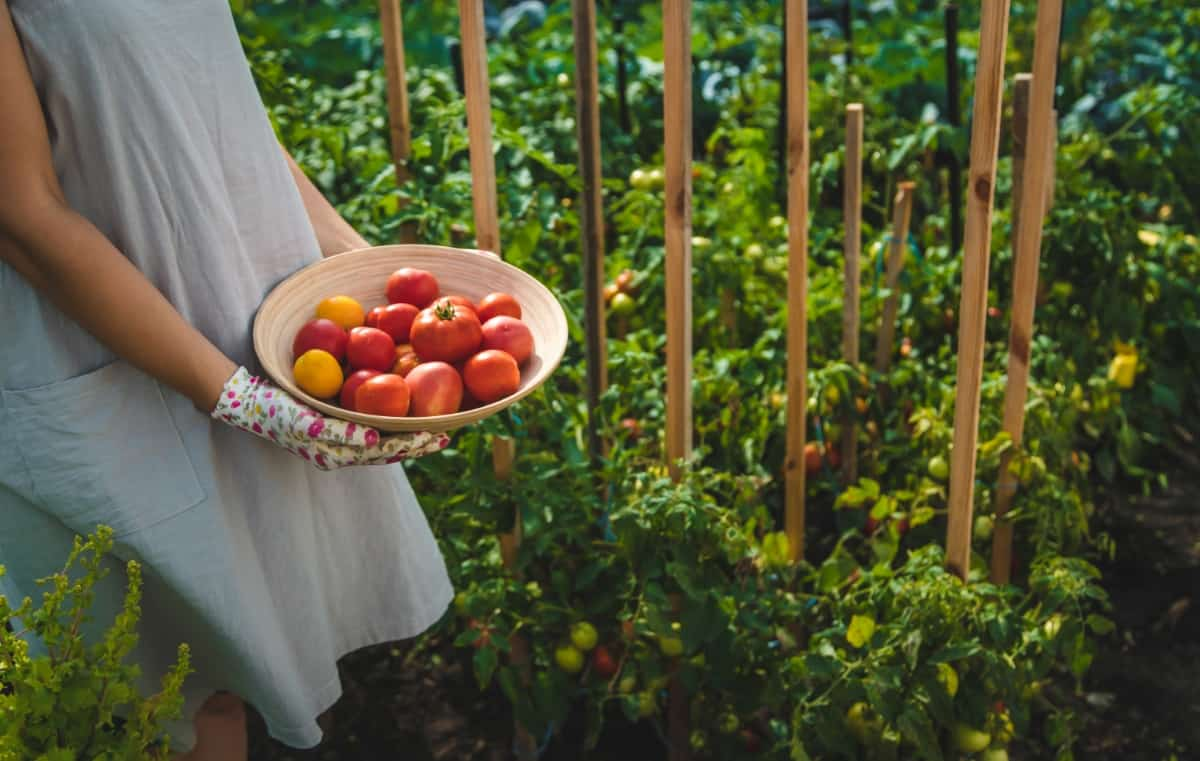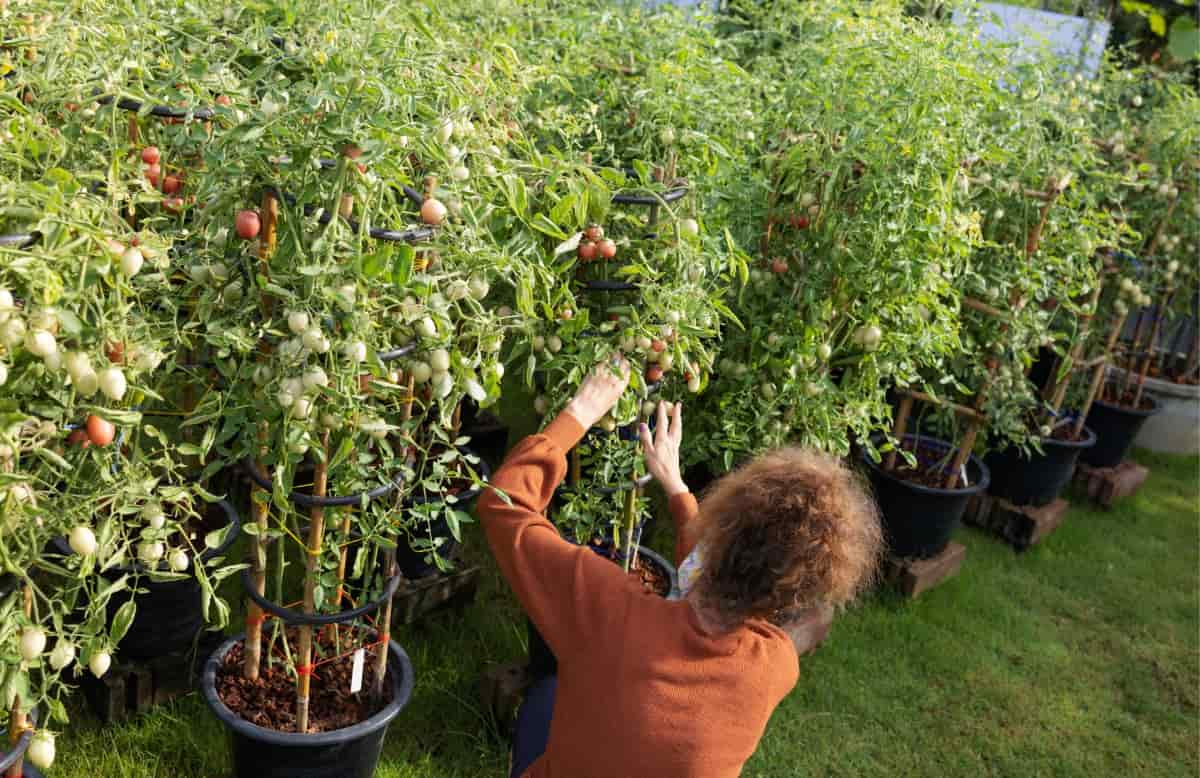Are you ready to grow organic tomatoes right in your backyard? Get ready to explore the fascinating world of organic tomato gardening, where we’ll delve into the scientific intricacies of selecting, planting, nurturing, and harvesting these luscious fruits. In this comprehensive guide, we’ll cover everything from selecting the right organic tomato varieties and preparing the soil with organic matter to implementing effective watering practices, natural fertilization methods, and pest and disease management techniques.

Introduction to Organic Tomato Gardening
Organic tomato gardening is a sustainable approach to producing this popular fruit. It starts with selecting the right soil, rich in organic matter, and choosing varieties suited to your climate. Planting should occur after the last frost in a location with ample sunlight. Regular watering, pruning, and the use of natural pest control are key to healthy growth. With patience and care, gardeners can enjoy a bountiful harvest of tomatoes, grown without synthetic fertilizers or pesticides, ensuring a fresh, flavorful, and eco-friendly crop.
Selecting Organic Tomato Varieties
It is important to take into consideration aspects like as disease resistance, taste profile, and fruit size. Tomatoes with names like “Sun Gold,” “Black Krim,” “Cherokee Purple,” and “Brandywine” are among the most popular types grown organically. In order to provide the groundwork for a good harvest, it is very necessary to do research and choose the appropriate organic tomato types.
Preparing the Soil with Organic Matter
To ensure healthy organic tomato plants, test the soil’s pH level to 6.0 to 6.8 and incorporate organic matter like compost, manure, or organic fertilizers to improve soil structure and fertility. This provides essential nutrients and encourages beneficial microbial activity. Growing tomatoes requires nurturing healthy seedlings, which involves
- Selecting healthy young plants.
- Choosing an optimal growing location with a soil pH between 6.2 and 6.8.
- Preparing the soil with organic matter and calcium.
After the frost threat has subsided, transplant the seedlings deep into the soil to encourage robust root development. Mulching is applied to maintain soil moisture, ward off diseases, and protect the fruit’s cleanliness. Support systems like trellises, stakes, or cages are installed to provide structural support. Companion planting is introduced to deter pests, combat diseases, and enhance pollination. Regular, deep watering at ground level is recommended, and pruning is done to facilitate air circulation and prevent disease.
In case you missed it: Tomato Plant Flowers But No Fruit: Reasons, How to Fix, and Solutions

Organic Planting Techniques
Tomatoes are two types determinate and indeterminate varieties. Determinate varieties reach a predetermined size and ripen their fruit simultaneously, while indeterminate varieties yield fruit over an extended period, often growing up to 6 feet tall. Tomatoes thrive in full sun exposure, but some afternoon shade may be beneficial in warm climates. Space guidelines include:
- Single stem trellis planting 15 inches apart.
- Other supports or cages are planted 2 feet apart.
- Unsupported indeterminate tomatoes, allowing 3 feet between plants.
Watering Practices for Organic Tomatoes
Organic tomato cultivation begins with mindful watering practices. Take, for example, the method employed by organic gardener Sarah. She practices deep, infrequent watering, allowing the soil to dry slightly between waterings. Sarah uses a soaker hose to deliver water directly to the roots, ensuring that her plants receive the moisture they need while minimizing water waste through evaporation.
Natural Fertilization Methods
When it comes to natural fertilization, organic gardener Michael swears by compost. Before planting his tomatoes, Michael amends the soil with nutrient-rich compost, providing the plants with a solid foundation for healthy growth. Throughout the growing season, he side-dresses his tomato plants with organic fertilizers to ensure they receive a continuous supply of essential nutrients without resorting to synthetic chemicals.
Pest and Disease Management Organically
Dealing with pests & diseases in an organic garden requires creativity and diligence. Take Jane, for example, an advocate of organic gardening who manages pests by introducing beneficial insects like ladybugs and lacewings into her garden. By doing so, she maintains a natural balance that keeps common pests such as aphids and caterpillars in check without relying on chemical pesticides.
In case you missed it: Hydroponic Tomato Problems: How to Fix, Treatment, and Solutions

Pruning and Supporting Tomato Plants
Proper pruning and support are crucial for robust tomato plants. John, an organic gardening enthusiast, demonstrates the benefits of removing suckers to encourage strong central stems and better air circulation. By providing support in the form of sturdy stakes and trellises, John prevents his tomato plants from sprawling and ensures that the fruits remain off the reducing the risk of rot and pest damage.
Harvesting Organic Tomatoes
It is crucial to have a good understanding of when and how to harvest tomatoes in order to maintain their taste and freshness. Maria, who is an organic gardener, stresses the need of collecting tomatoes at the point in time when they are completely ripe on the plant. To do this, she carefully removes the fruit from the vine by twisting it or cutting it, taking care not to cause any harm to the plant. Maria then preserves her picked tomatoes at room temperature in order to preserve the tomato’s taste and texture to its full potential.
Yield of Organic Tomatoes per Plant
The yield of organic tomatoes per plant can vary widely on several factors, including the variety of tomatoes, soil health, climate, and cultivation practices. Generally, organic tomato plants can produce anywhere from 10 to 20 pounds of fruit per season. The use of bioinoculants and inorganic fertilizers can significantly impact the growth and yield of tomato plants.
In case you missed it: How to Grow Tomatoes in Michigan: Planting to Harvesting Guide

For instance, a study showed that the combined application of bioinoculants and inorganic fertilizers resulted in a maximum plant height of 96.45 cm and a maximum number of fruits at 29 per plant. The goal of organic farming techniques is to improve the health of the soil and increase its fertility via the use of natural methods such as crop rotation and composting.
Growing organic tomatoes at home is a fulfilling and rewarding experience that not only yields delicious fruits but also aligns with environmentally friendly practices. Cultivate a bountiful harvest of organic tomatoes while promoting sustainability and natural gardening methods.
- Best Liquid Fertilizer for Flowering Plants
- How to Set Up an Efficient Watering System for Home Garden
- How to Mulch Tulip Bulbs: Expert Tips Best Tulip Blooms
- Common Problems with Potted Figs and How to Solve Them
- How to Prevent Flower Drops in Pomegranate Trees: Effective Tips
- How to Boost Ridge Gourd Flowering and Yield: A Beginner’s Guide
- Effective Pollination Techniques for Maximizing Gourds Yield
- Composting Techniques for Manure in Home Gardens
- A Step-by-Step Guide on Propagation Techniques for Jasmine Plants